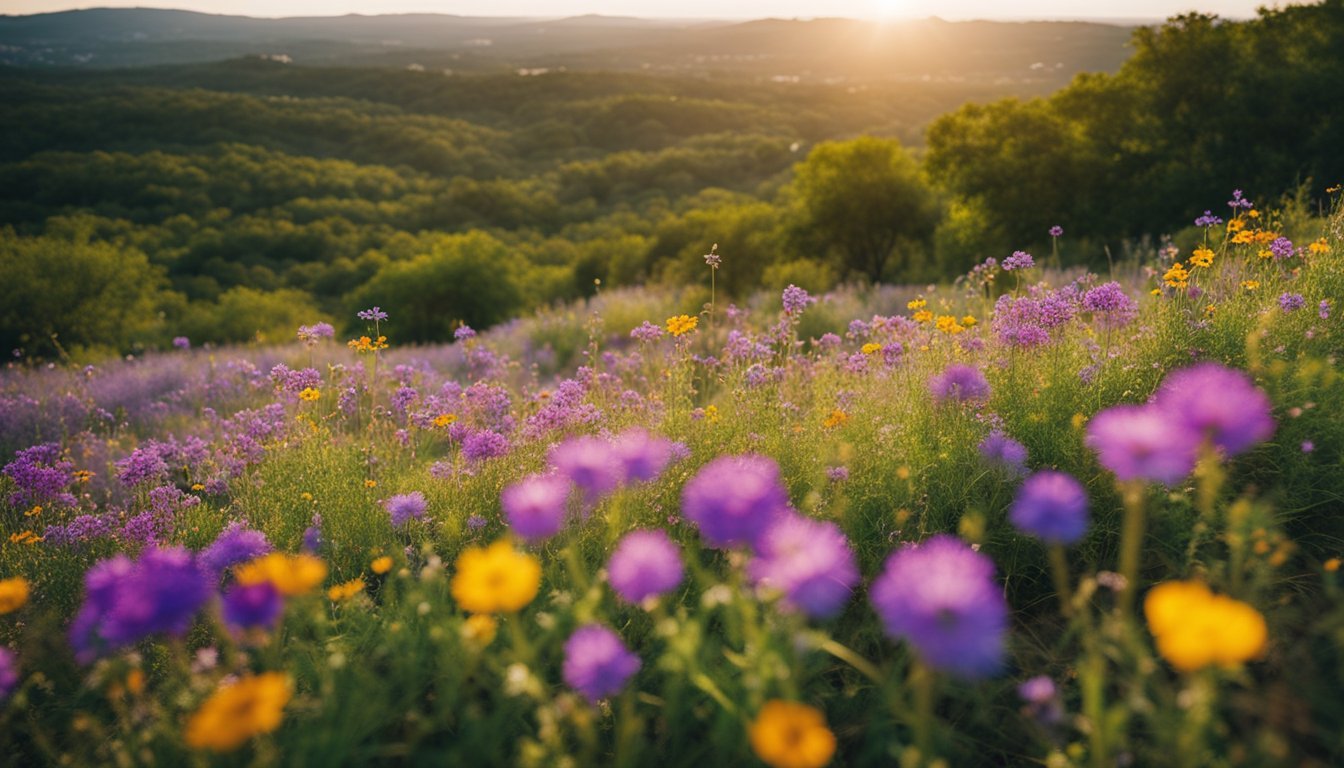Wildflowers of Austin
As March approaches, many Austinites are desperate for the warm days of spring–especially in the wake of historic Winter Storm Uri. As warmer days approach, Texas will soon be filled with fragrant and eye-catching wildflowers. These lovely plants can be viewed at city parks such as Lady Bird Lake, McKinney Falls State Park, and Zilker Botanical Garden: a cultivated area covering 31 acres, featuring an array of vibrant flowers that tend to thrive in the arid conditions of southwest Texas.
Read on for a hint of springtime, with some interesting facts about Texas’s loveliest wildflowers.
Texas Bluebonnet
The official state flower of Texas, the Bluebonnet is a member of the pea family: known scientifically as Lupinus Texenis. The Bluebonnet is also known as Texas Lupine, Buffalo Clover and Wolf Flower. It is identified by its large, sharply pointed leaves and multiple flower heads. The leaves are generally light green with a velvet texture, topped by as many as fifty fragrant, indigo flowers.
The Bluebonnet is often found along roadsides, in prairies and open fields. Aside from Texas, the Bluebonnet can be found in Florida, Louisiana, and Oklahoma. It is known to attract butterflies and honeybees and is said to represent bravery and sacrifice.
Indian Paintbrush
A member of the Figwort family, Indian Paintbrush is known scientifically as Castilleja Individisa, as well as Texas Paintbrush, Scarlet Paintbrush and Entireleaf Paintbrush. The plant typically grows between 6-16 inches in height, with flowers that are most commonly bright red but can also grow in pale yellow or white variations.
Indian Paintbrush is not easily transplanted. While technically an annual, it is known to be unpredictable and inexplicably blooms more brilliantly in certain years more than others. It is often found in plains, meadows, along roadsides and near the edges of woodland areas.
Indian Paintbrush attracts hummingbirds, as well as insects who feed on nectar: such as butterflies and native bees. The flower is said to symbolize a new start in life and the discovery of your personal path.
Indian Blanket
This colourful member of the Aster family resembles a decorative pinwheel and is known scientifically as Gaillardia Pulchella. It is also referred to as Firewheel and Girasol Rojo. Plants can grow as tall as three feet, and blooms are most commonly red, yellow and brown. The flower thrives between May and August, but blossoms can appear earlier and last longer in years when rainfall is plentiful.
Indian Blanket is typically found in grasslands, undisturbed locations, and in open areas. It is a perennial with a relatively short life but can last longer when watered properly.
The root can be used medicinally to cure ailments such as gastroenteritis, soreness of the eyes and skin disorders. Flowers are known to attract butterflies and are highly beneficial to native bee populations. Indian Blanket is said to represent modesty, charm and happiness.
Black-Eyed Susan
Resembling daisies, the Black-Eyed Susan is a member of the Aster family, known scientifically as Rudbeckia Hirta. It can range from an annual to perennial depending on the environment and level of care but usually blooms between June and October.
Black-Eyed Susans are found in nearly every state in the US and are usually located in plains, meadows, pastures, woodland areas and open fields. It is popular for use in bouquets and floral arrangements due to its cheerful appearance.
The flowers attract birds and butterflies, as well as nectar-feeding bees. Roots can be used medicinally to cure ailments such as colds, snakebites, earaches and swelling. The Black-Eyed Susan is said to symbolize motivation, encouragement and breaking free from bad habits.
Winecup
A member of the Mallow family, Winecup is known as Callirhoe Involucrate, as well as Purple Poppy Mallow. It is identified by its five-count maroon petals, dotted with white centres. Blossoms open in the morning and close of the evenings, usually remaining closed after they have been pollinated.
Winecup is a perennial that can grow between 8 to 12 inches tall. They bloom in variations of white, pink and purple, typically between March and June. They are usually found in open wooded areas, in thickets and on rocky hilltops.
Roots can be crushed and inhaled to treat head colds or boiled into a tea to cure general aches and pains. The blossoms attract butterflies and are beneficial to native bee populations.
Pink Evening Primrose
As their name suggests, Pink Evening Primrose tends to open its blossoms in the evenings: often so rapidly that the movement can be observed with the naked eye. The flower is known scientifically as Onothera Speciosa.
Pink Primrose—also known as Pink Ladies—typically blooms between February and July. In the south, blossoms often take on a darker hue and sometimes open in the morning. They can usually be found in prairies, plains, meadows, hillsides, and woodland areas.
Primrose can be cooked as greens or added to salads and is most flavorful if harvested before the plant flowers. It tends to attract birds, as well as nectar-feeding bees. Primrose is said to represent youth, eternal love, and memory.
Rain Lily
Known officially as Cooperia Drummondii, this species of plant was named for Scottish naturalist Thomas Drummond, who travelled to Velaso, Texas in the spring of 1833 to collect samples along the Colorado, Brazos and Guadalupe rivers. During his time in Texas, Drummond collected over 750 specimens of plants and 150 specimens of birds.
Also known as Zephyranthe, Rain Lillies typically bloom between May and September. They grow well in lawns and flower beds and tend to appear in the wild after heavy rain. They are said to symbolize new beginnings and rebirth, as well as happiness and hope for the future.
Which flowers do you hope to spot this spring?









